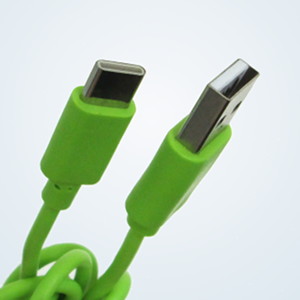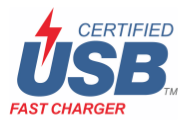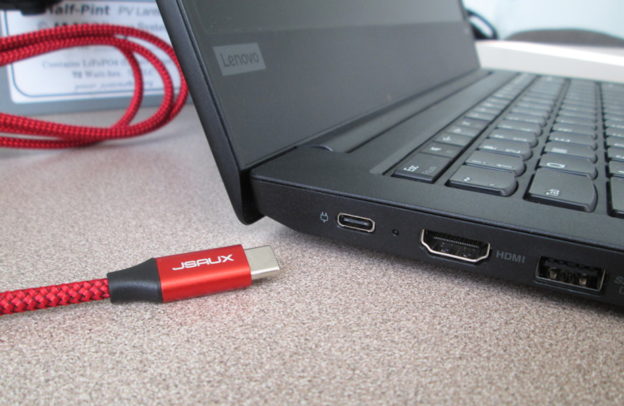Laptop computers are now being produced which use a USB Type-C connector to charge the laptop. Laptops need more power than phones or tablets, and the new USB PD protocol (PD = Power Delivery) makes much higher power levels possible; up to 100W can be passed over some USB-C cables. The USB specs and terminology keep getting revised and now contain a smorgasbord of optional features, and the marketing terminology is totally confusing. Here’s my summary of what you need to know about USB-C laptop charging, cables and chargers.

The USB-C standard defines a connector which is a little bit bigger than the USB Micro-B connector on your smartphone but with a lot more pins (24) and many options. The key here being options, which your device or cable may or may not implement, hence a lot of confusion ensues. Some of these totally optional features that might or might not be implemented are:
“SuperSpeed” data rates of 5Gbps OR 10Gbps
Power delivery of more than 7.5 Watts
video monitor support (Like DisplayPort) or audio output using the “Alternate Modes”
I’m not going to try and explain everything in this article, only what you need to know if you’ve got a computer that charges over the USB-C port.
1 Just because a computer has a USB-C port doesn’t necessarily mean it can charge itself over that port, though it’s pretty likely. Check the marketing literature or user’s manual. If it can charge over the USB-C port, it can also go the other way and provide power to your phone or tablet.
2 Computers that can charge over USB-C are using the new USB PD protocol to get the power they need. “USB PD” is the magic words to look for. It means the charger and charge-ee can negotiate voltages above 5V. USB PD allows 9V, 15V & 20V at 3A current for 27W, 45W and 60W respectively. Also allowed is 20V at up to 5A current for 100W, but this will only happen if the cable is electronically marked to indicate to the equipment that it can support 5A of current instead of the default 3A. If your computer supports the USB PD protocol, maybe you’ll see one of these logos next to the USB port on your computer.


3 The Wattage rating of the PD charger is the only thing you need to pay attention to. The wattage should be indicated right in the logo on the packaging. This rating is the maximum it can support, but higher wattage chargers are required to also support all possible lower charging levels too. And devices accepting charge can accept multiple different power levels. Therefore any correctly built “USB PD” charger can charge your laptop over the USB-C port, but some will charge it faster than others. For instance my Thinkpad E480 came with a 65W power brick, but I can charge it with a 36W or 27W USB PD charger made by any company, not just Lenovo. Interoperability and power level fall-back are part of the USB PD standard. A notable exception to this rule might be HP laptop computers. It appears many HP laptops have a minimum charging power that they require or they won’t attempt charging at all. Read the owner’s manual carefully for USB PD minimum power requirements.

4 Any cable with a type-A connector on one end and USB-C on the other will limit charging to the old standard of 5V and 15W or less. They don’t support USB PD and won’t be able to charge you computer fast enough to be useful. USB PD charging only works over type C connectors.

5 Any correctly built cable with USB-C connectors on both ends will support USB-PD at 3A for up to 60W of power, which is plenty to charge most any laptop in under 3 hours. Some cables can support up to 5A and 100W and are electronically marked so the charger can tell. The charger/computer will not negotiate power levels over 60W unless the cable indicates it’s OK. (100W cables are always electronically marked, but they may not be visually marked. Read the package if you need >60W!)
All the above is great, but it depends on the equipment all being built to the USB PD spec. How can you know if a charger or cable is built “correctly?”


The USB Implementers Forum (USB IF) has a certification program for manufacturers. Products which have passed their certification can bear the official logos and should be listed on this web page: https://www.usb.org/products
Not all manufacturers are bothering to do this, but it is the only official way for you to know that a product is built to spec and will interoperate with other devices correctly. Three brands I’ve found on Amazon.com that are properly certifying all their products are Amazon Basics, Nekteck, and Cable Matters.
The Bottom Line

Practically speaking, For charging a notebook computer you need any old USB-IF certified USB-C cable, and a charger which supports the USB “PD” spec and is rated at least 27W. Even lower wattages will work, though at a snails pace. For the fastest charging the USB PD charger should be rated the same wattage or higher than the brick that comes with your computer, but this is not essential. It should be listed on the USB IF website if it has been properly certified, and should sport the Certified USB Charger Logo on the package (See above). Or alternately the Certified USB Fast Charger Logo (right), which means it also supports an optional add-on to the PD spec allowing for fine tuning of voltage and current levels. (So far I’m unaware of any computers that need this addition.)
